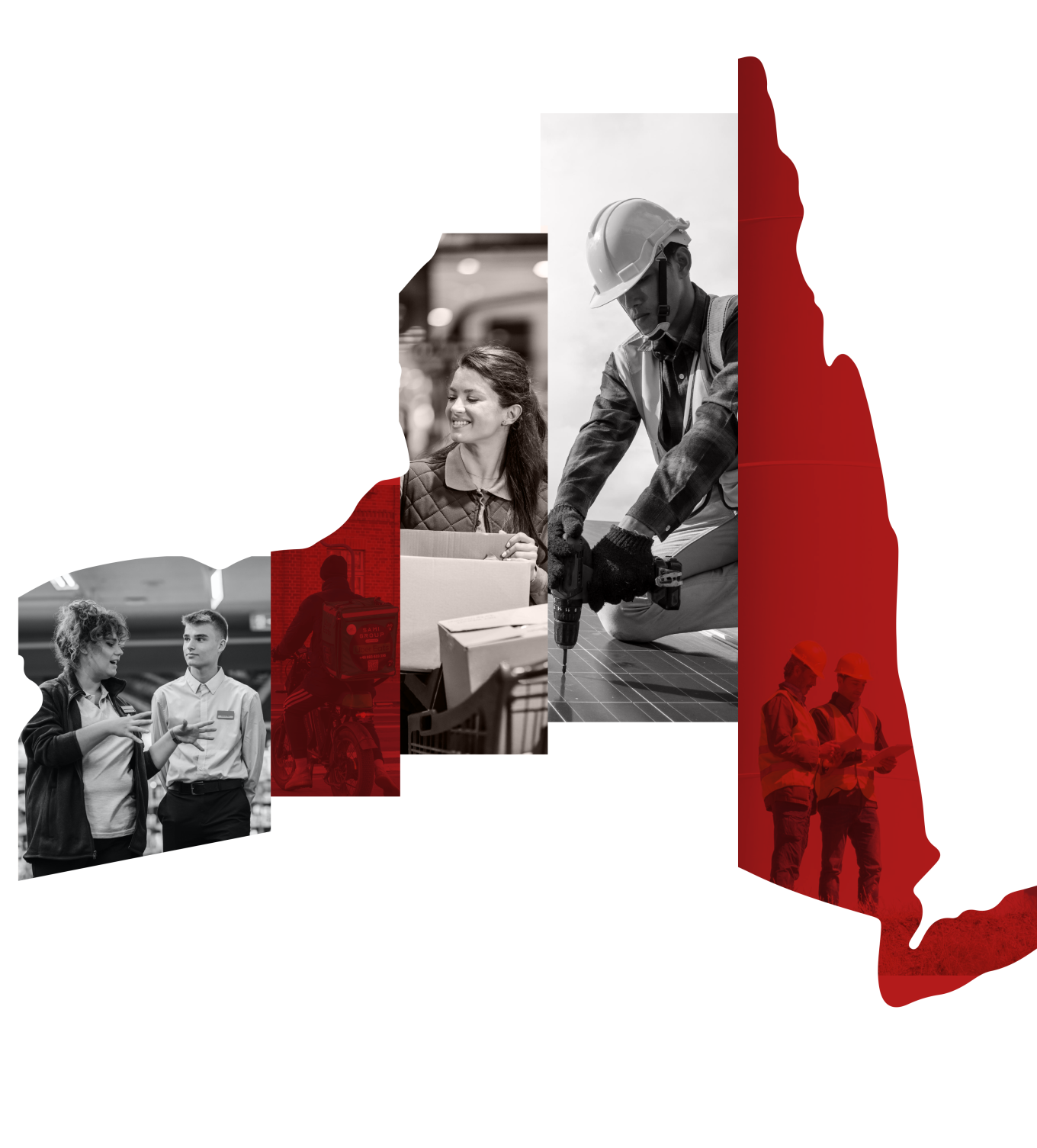
Eighty years ago, Cornell University’s New York State School of Industrial and Labor Relations was founded to address the great workplace conflicts of that era and promote better labor-management relations. Today, we continue to be the world’s leading school focused on labor, management and the economy.
To that end, we are thrilled to release the 2024-25 New York at Work report.
Now in its fifth year, the annual report draws on ILR expertise, research-based data and policy analysis on a broad range of key issues affecting the state’s workers, unions, communities and employers. It is intended to serve as an informative, accessible and relevant resource for policymakers and the public.
Table of Contents
Buffalo Co-Lab
- ILR Assists New York Lawmakers in Amending the State Labor Relations Act
- Gender Inequality in the Erie County Labor Market
Center for Applied Research on Work
Climate Jobs Institute
Criminal Justice and Employment Initiative
Institute for Compensation Studies
Labor and Employment Law Program
Scheinman Institute on Conflict Resolution
The Worker Institute
- New York Care Workers: The Weight of Stress and Unpaid Caregiving
- Regenerative Organizing: A Pilot Program Promoting Personal Healing and Collective Resilience for Care Workers
- Domestic Workers Rising: An Evaluation of the We Rise Peer Training Program
Yang-Tan Institute on Employment and Disability
About the New York State ILR School
ILR Assists New York Lawmakers in Amending the State Labor Relations Act
Cathy Crieghton, Buffalo Co-Lab director
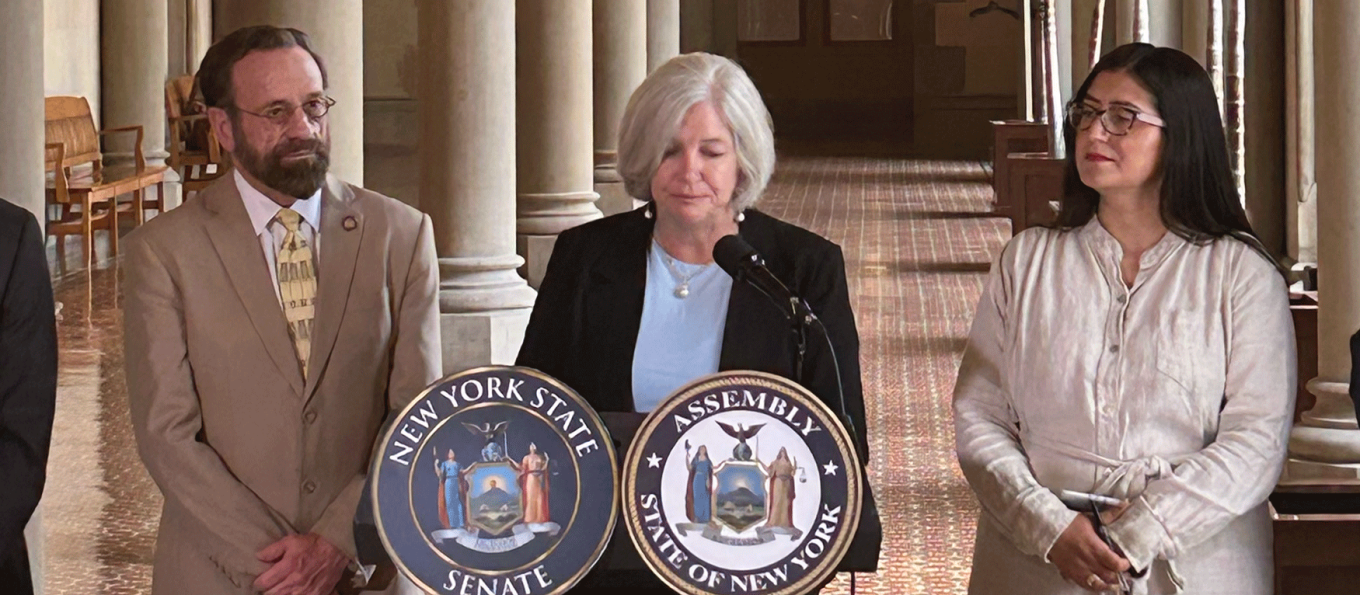
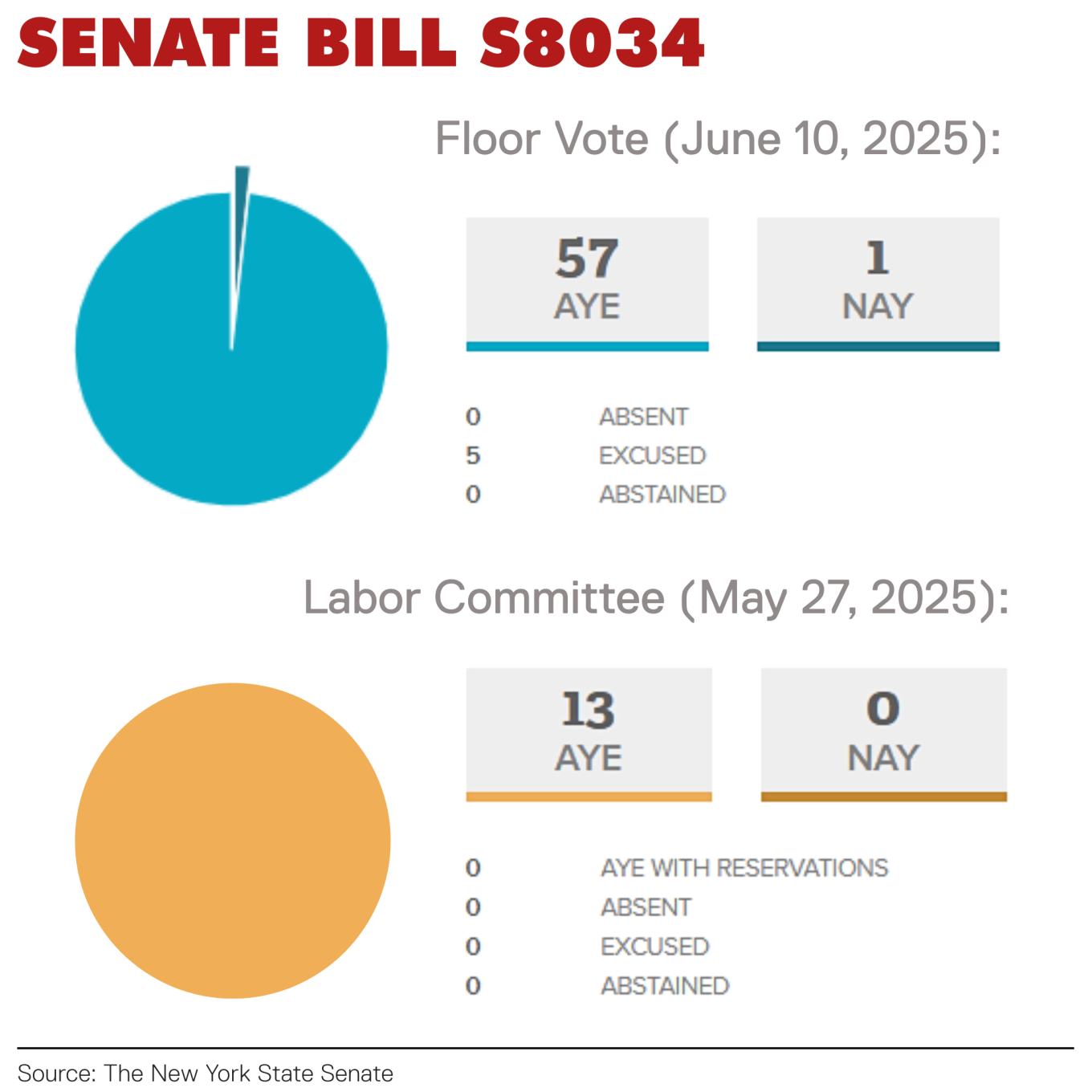
Overview
Employees have the right to organize and to bargain collectively through representatives of their own choosing, as guaranteed in the New York State Constitution, Article I, Section 17. For almost a century, federal labor law under the National Labor Relations Act has ensured that constitutional right for most private sector workers in New York.
However, in the first week of his administration, President Donald Trump terminated a member of the National Labor Relations Board (NLRB) and, as of this writing, has failed to fill vacancies, resulting in seven months without a quorum to operate. Because the NLRB is not fully operable, many New York private sector workers do not have a forum to have their state constitutional right to organize and bargain upheld.
Beginning in January 2025, the ILR Buffalo Co-Lab worked with NYS Labor chairs Senator Jessica Ramos and Assemblymember Harry Bronson to craft changes to the New York State Labor Relations Act. In June, the NYS Legislature passed Senate Bill S8034 to amend the law. The bill is awaiting the governor’s signature.
The potential public impact on New York workers is extraordinary.
Key Components of Bill
- Gives the NYS Public Employment Relations Board the authority to act when the federal government is unable to act, and has failed to act, with regard to protecting workers’ rights to organize and bargain collectively.
- Keeps workers’ collective bargaining agreements in full force and in effect under state law.
- Ensures New York complies with its state constitutional provisions.
- Serves the people of the state as the NYS Public Employment Relations Board is empowered to promptly settle labor disputes, which promotes labor peace.
- Promotes workforce stability and uses New York state labor relations law where the federal government refuses or fails to act to protect state interests.
Impact
The new legislation modifies the existing New York State Labor Relations Act, passed in its original form in 1937. It allows unions, employees and employers to go to the NYS Public Employment Relations Board, unless the NLRB brings an action to claim jurisdiction over such workers. Under long-established Supreme Court case law, NLRB v. Nash Finch, 404 NLRB 138 (1971), the NLRB has the right to assert its jurisdiction. This amended bill proactively protects workers where the federal government has disabled federal protections.
Other states are passing similar bills because the federal government has left the NLRB largely nonfunctional. The ILR Buffalo Co-Lab has been working with representatives from California, Illinois, Massachusetts, Oregon, Vermont and the AFL-CIO and its affiliates, who are working on passing or amending their state statutes.
Related Information
- Assemblymember Harry Bronson, Labor Chair, thanked the ILR Buffalo Co-Lab for its assistance.
- Protecting New York’s Workforce: Labor Chairs Senator Jessica Ramos and Assemblymember Harry Bronson Join New York State AFL-CIO and Cornell School of Industrial & Labor Relations Call for NYS to Defend Worker Rights Against Federal Attacks
- NYS Senate Bill S8034A
Gender Inequality in the Erie County Labor Market
Russell Weaver, Buffalo Co-Lab research director; Cathy Crieghton, Buffalo Co-Lab director

Overview
Through a combination of statistical analyses and focus group conversations, this report found that women working in Erie County, New York, relative to men, simultaneously experience lower pay (after controlling for relevant factors) and greater barriers to success. Although this phenomenon is national, if not global, in scale and therefore not unique to Western New York (WNY), by documenting conditions in the local economy, this report functions as a call to action for local and state representatives in Erie County. The industries that are creating the most jobs and largest footprints in the WNY economy are being powered disproportionately by women; however, women working in Erie County are not receiving an equal share of the value from their labor, nor are they being elevated equally into positions of political and economic influence.

Key Findings
- After controlling for factors like education, experience, occupation and industry, the adjusted average hourly wage for women is $2.74 less than that of men.
- The wage gap widens with higher education – women with graduate or professional degrees earn $3.68 per hour less than equally qualified men.
- Mothers in dual-income households earn $3.18 per hour less than fathers, reinforcing national trends where caregiving responsibilities disproportionately affect women.
- Despite comprising 51.3% of Erie County’s population, women hold only 27.3% of County Legislature seats and are just 30% of Buffalo’s most influential business and civic leaders.
Recommendations
- Enforce pay transparency laws to ensure women have access to salary information and can challenge unfair wage disparities.
- Implement stronger workplace regulations to hold employers accountable for gender-based pay inequities.
- Introduce affordable, high-quality childcare programs to alleviate the burden on working mothers.
- Advocate for paid family leave policies, allowing women and men to balance career growth with caregiving responsibilities.
- Create leadership development programs to support women’s advancement in corporate and government roles.
- Establish mentorship networks to connect women with influential leaders who can advocate for their career growth.
- Promote policies that encourage gender balance in political representation, such as recruitment initiatives and leadership training for women in Erie County.
- Support workplace unionization efforts.
Research Impact
Following the report launch, the authors were invited to speak at the sixth annual Women of Color (WOC) Summit in Niagara Falls, New York. The WOC Summit founder expressed interest in partnering with Erie County and ILR in Buffalo to pursue a specific recommendation – building networked support institutions for women. When interviewed, most study participants found the focus group portion of the study to be empowering. Many expressed that they would benefit from having a space where they could come together to speak freely and share their experiences with other women. One participant called for a “human library where we could check out people instead of books.” Building systems of support and care seems like a necessary step toward more egalitarian gender relations in Erie County and beyond. This study has already catalyzed conversations and budding partnerships to act on that objective.
Related Information
Employment and Work in New York State: Empire State Poll, Spring 2025
Conducted by the Center for Applied Research on Work, with authorship and contributions listed below.

Michael Lenmark, Worker Institute senior research support specialist; Megan Thorsfeldt, Climate Jobs Institute senior climate jobs associate; Anne DeCecco, CAROW senior research and policy development associate; Russell Weaver, Buffalo Co-Lab director of research; Jillian Morley, Center for Racial Justice and Equitable Futures research support specialist; Zoë West, Worker Institute worker rights and equity associate; Anne Marie Brady, Worker Institute director of research for worker rights and equity; Avalon Hoek Spaans, Climate Jobs Institute assistant director of research.
Overview
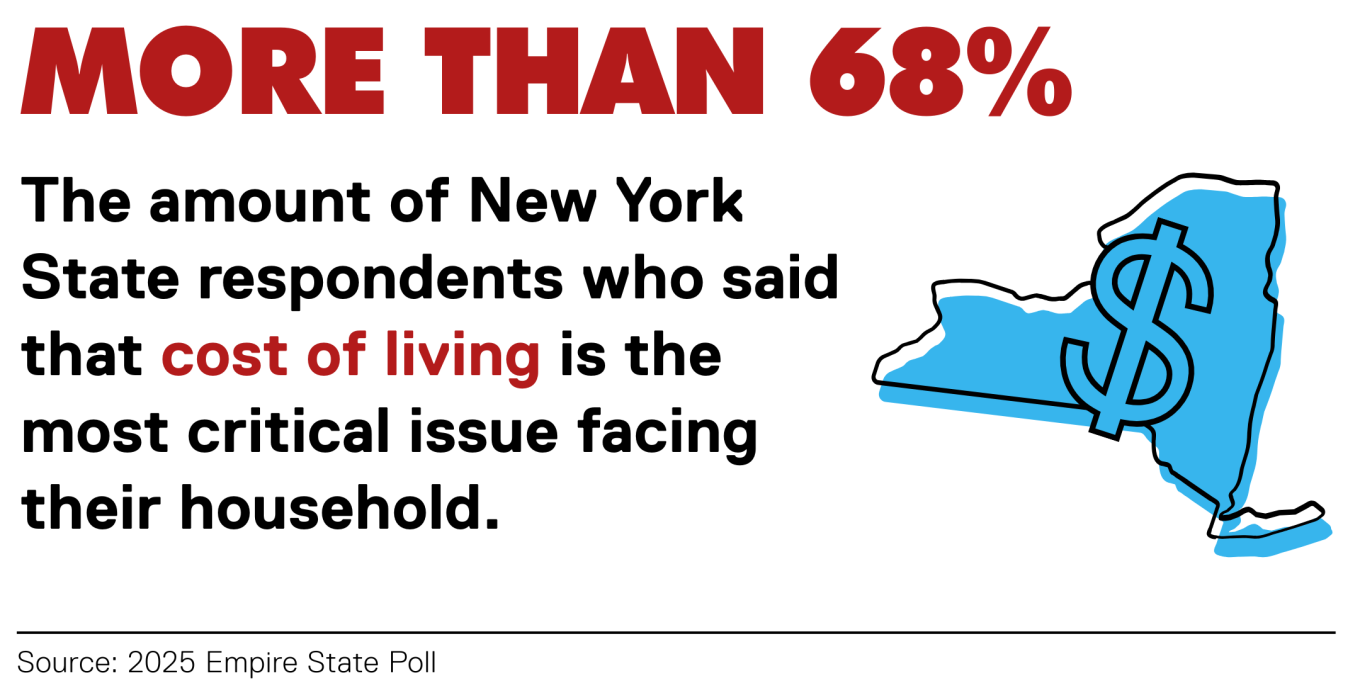
The Empire State Poll (ESP) is designed to illuminate the concerns and labor and employment experiences of New York state residents. In 2024, the Center for Applied Research on Work (CAROW) at Cornell University’s School of Industrial and Labor Relations distributed the ESP to over 2,600 New York state residents to learn what they experience in the world of work. The report covers a wide variety of topics related to respondents’ opinions and labor and employment experiences.
The ESP findings reveal the lived experience of New York state residents – their concerns, their relationships to work, labor market participation and experience. The data collected can serve as a guide to employers, policymakers, legislators and advocates to understand the opportunities and challenges for workers in New York state, and to address these challenges in 2025 and the years to come.
Key Findings
- More than 68% of respondents say that the cost of living is the most critical issue facing their household.
- More than 82% of respondents express some level of concern about how climate change will impact future generations.
- Over 50% of employed respondents have access to employer-sponsored health, vision and dental insurance, but access to those benefits is limited by disparities across race and education.
- Nearly 27% of respondents who reported caregiving responsibilities indicate that such responsibilities make it difficult to maintain a job.
- There is a high level of unionization (34.9% of ESP labor force participants who are not self-employed) and a high opinion of unions (65.9%), compared to just 12.1% who disapprove.
- The majority of respondents support strengthening employment protections in New York state:
- 64.4% significantly support stronger protections for wage theft
- 58.3% significantly support stronger protections against employer retaliation
- 56.5% significantly support stronger protections against workplace discrimination
- 57% significantly support stronger protections against workplace harassment
Research Impact
New York state faces myriad challenges and opportunities related to labor, employment and the communities where workers live. It is vital for policymakers and people leaders to understand the concerns of New Yorkers as they make decisions that have broad implications for our state. The Empire State Poll offers a unique window into the daily lives of New Yorkers that can inform policy and practice.
Related Information
Update on New York’s Renewable Energy Policies, Plans & Progress: A Climate Jobs Perspective
Iris Packman, Esq., Climate Jobs Institute senior research and policy development associate; Bethany Figueroa, Climate Jobs Institute research support specialist

Overview
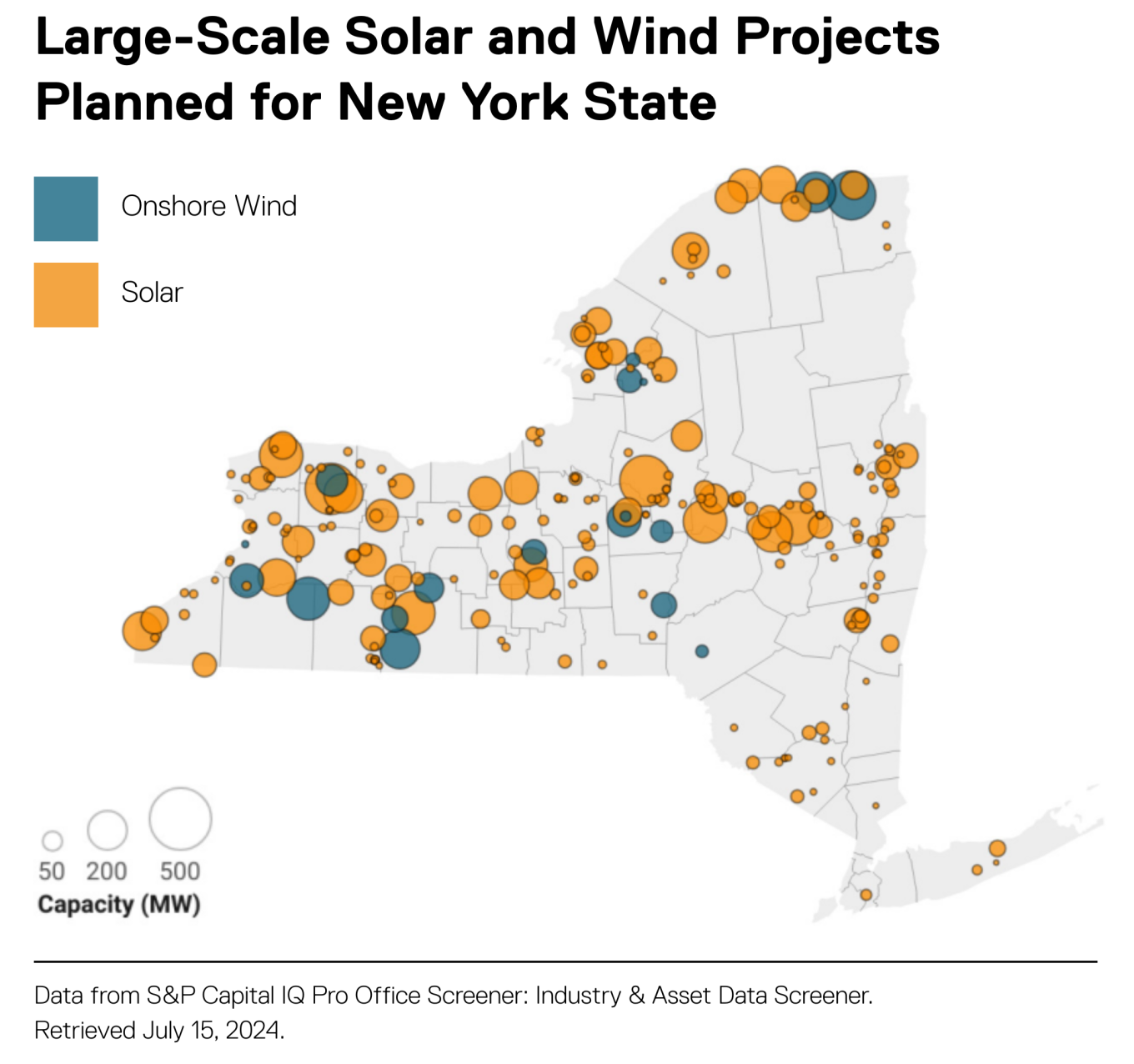
This report analyzes the state’s progress toward meeting its clean energy generation targets, examines where and how renewables are being built in the state, and explains the impact of the renewable energy transition on job creation and job quality. The analysis finds that, although New York has nation-leading labor standards on clean energy work and met its short-term rooftop and community solar goal, it is falling behind on its larger goals to lower emissions and generate clean electricity at the pace and scale that science demands. This report also identifies areas of job growth, inequities in opportunity, and strategies to ensure that the future jobs created are high-quality, family-sustaining, union careers.
Key Findings
- New York is falling short of its renewable energy goals. Clean energy will cover only 38%-44% of the state’s electricity demand by 2030, and it will take at least three more years to reach its 70% target for that year.
- The outlook is mixed. Siting and permitting reforms have expedited clean energy development, but supply chain instability and changes at the federal level have caused considerable uncertainty and delays.
- Clean energy promises substantial job creation, but the opportunities are not distributed equitably. Women and Black workers remain underrepresented in the industry, and 65% of solar workers relocated to NYS for a job.
- Unions are the key to recruiting and training a skilled clean energy workforce. Labor has fought for and achieved groundbreaking labor standards on large-scale renewable projects in NYS, but most distributed solar installations pay neither union wages nor benefits.
Recommendations
- New York must invest in more renewable energy projects to meet projected demand.
- Developing more publicly owned projects, especially onshore wind and solar, will help offset uncertainty at the federal level.
- The state should broaden labor protections for renewable energy workers not currently covered by recent reforms, such as in smaller-scale projects, energy storage and adjacent industries.
- Future clean energy projects must have targeted pathways for high-quality jobs for frontline communities.
Research Impact
This research compiled climate and clean energy data from a labor perspective, looking at both the quantitative buildout of clean energy and the qualitative impacts on jobs and disadvantaged communities. The accompanying webinar and panel discussion featured state lawmakers, labor leaders and climate policy experts, and had over 100 attendees. The Capitol Pressroom podcast featured the report in a recent episode. The Climate Jobs Institute (CJI) is following this research with a forthcoming report, “Key Interventions for New York State,” slated for release during Climate Week 2025. This report will recommend the top 10 initiatives the state can take to meet its climate, clean energy and labor goals.
Related Information
- 2025 CJI report launch: New York’s Clean Energy Expansion Needs a Jolt
- 2025 CJI webinar: Update on New York’s Renewable Energy Policies, Plans & Progress
- 2024 CJI report: Exploring the Conditions of the New York Solar Workforce
- New York’s potential green energy job future, Capitol Pressroom
Occupational Restrictions and Inadequate Relief in State-Level Clean Slate Efforts
Matt Saleh, J.D., Ph.D., Criminal Justice and Employment Initiative senior associate director; Jason Hoge, Esq., Criminal Justice and Employment Initiative consulting reentry specialist; Ethan Mulroy, Harvard Business School research associate

Overview
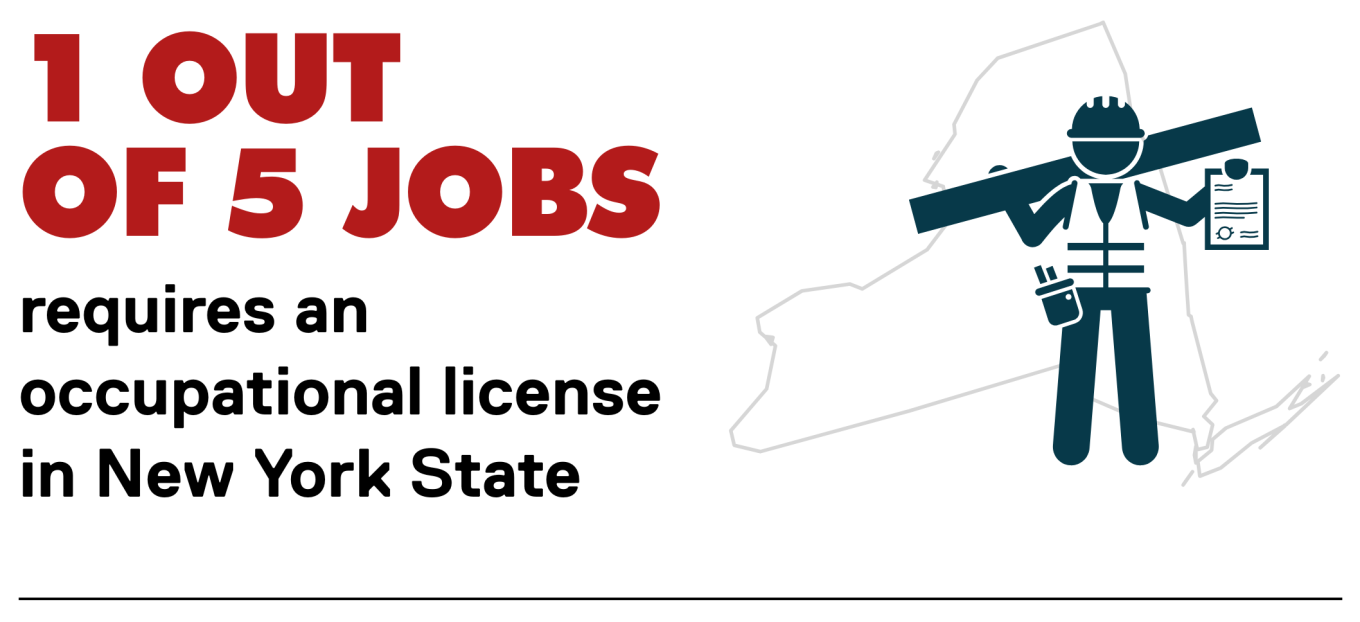
Having a criminal conviction can make it extremely difficult to find stable employment. In an effort to help justice-impacted individuals, New York became one of the most recent states to pass “clean slate” legislation. The Clean Slate Act (CPL 160.57) offers automatic record sealing for certain offenses after a period of time has passed. One goal of the act is to curb private employer discrimination by limiting access to criminal records for the 2.2 million New Yorkers with criminal convictions. While this is usually achieved by “sealing” – or hiding – the records, one problem with New York’s approach is that it does little to overcome barriers stemming from legally imposed occupational licensing restrictions.
ILR’s Labor and Employment Law Program’s Criminal Justice and Employment Initiative (CJEI) is engaged in an ongoing effort to catalog and analyze New York state laws and regulations that restrict employment access for people with criminal convictions. The state currently has 500 laws and regulations restricting work access based on criminal records, and the act specifies that records are not sealed where state or federal occupational restrictions apply. This has serious repercussions, as more than one in five jobs in New York state require occupational licenses.
Key Findings
- In New York, one in five jobs requires an occupational license. As a result, New Yorkers with criminal records face automatic or nearly automatic disqualification from hundreds of thousands of jobs requiring licenses or certification, undermining the goal of Clean Slate.
- Many government-related jobs require a fingerprint-based background check, meaning potential employers are still allowed to review conviction records.
- New York has 500 separate laws and regulations restricting work access based on a criminal conviction. The new Clean Slate Act largely does not seal records for these purposes.
- Record “sealing” is often mistaken for “expungement.” They are not the same: expungement usually means the record is destroyed, while sealing means access is hidden in certain contexts.
- The record sealing waiting period is three years for eligible misdemeanors and eight years for eligible felonies. The clock starts either after incarceration is complete or from the date of sentencing, if there was no sentence of incarceration. These waiting periods pose barriers, and many occupational restrictions are “indefinite,” with no time limit. This means even after waiting significant periods for Clean Slate relief, a person may still find themselves ineligible for jobs where these restrictions apply.
Recommendations
- Employers and licensing/certifying bodies face an increasingly complex legal environment and need to understand their legal obligations. This can be accomplished by training the state agencies that have licensing/certifying authority.
- Clean Slate, Corrections Law Article 23-A, and the hundreds of occupational restrictions create confusion over legal requirements. This is clear in recent lawsuits where hiring restrictions were found to be discriminatory (e.g., DoorDash, NYC Department of Education). Building public awareness for justice-impacted groups, reentry providers and employers can help avoid misunderstandings that undermine the state’s public policy goals for fair chance hiring and hurt the state economy.
Research Impact
CJEI combines research, direct interfacing with key stakeholders and law/policy expertise to deliver just-in-time curriculum and training needs around New York state. As new laws like the Clean Slate Act come into effect, CJEI seeks feedback from diverse groups around the state to understand where challenges and opportunities arise in fair chance hiring efforts. A big part of this effort is delivering training modules to justice-impacted individuals, legal and justice-system professionals, workforce and reentry organizations, employers and licensing/certifying bodies.
These trainings aim to dispel myths, increase compliance and ultimately lead to better employment outcomes for justice-impacted New Yorkers. By addressing gaps in public awareness and understanding of the legal rights and requirements related to hiring justice-impacted groups, CJEI aims to advance New York state public policy by increasing fair chance hiring, while also addressing “demand side” labor market needs, such as labor market shortages.
Related Information
- New York State Clean Slate Act
- ILR’s CAROW Policy Lab: A Short History of Criminal Background Searches in Employment
- NYS Department of Labor: Occupations Licensed and Certified by NYS
- Institute for Justice: Occupational Licensing in New York
- CAROW/CJEI: Updating New York State’s Employment Restrictions for People with Criminal Convictions
State of the Last-Mile Delivery Industry
Institute for Compensation Studies; Buffalo Co-Lab; Worker Institute

Overview
An interdisciplinary team from the ILR School has secured funding from the National Science Foundation to study the “last-mile” delivery industry. Researchers at the Institute for Compensation Studies, the Buffalo Co-Lab and the Worker Institute are examining the nature of parcel delivery work. The team is assessing the differences in wages, job quality and working conditions across the four companies – USPS, UPS, FedEx and Amazon – that employ or engage delivery workers. Researchers will also evaluate the advantages and disadvantages of new technologies, such as electric vehicles, dashboard cameras, vehicle sensors and digital parcel tracking, and the role of unionization in light of changing labor market dynamics in last-mile delivery. This ambitious three-year, multi-regional study will conclude in May 2028 and include an in-depth analysis of Buffalo, New York.
Key Findings
Emerging findings from pilot research in Buffalo, New York, have suggested three themes that will be investigated via a large-scale survey of last-mile delivery drivers:
- Compared to experienced workers, new labor market entrants/younger workers are less aware of, and less concerned about, wage-benefit differences across employers.
- Part-time and/or contract workers tend to be more satisfied with their jobs than full-time, permanent workers because they understand their job to be temporary.
- Technology masks and buffers the conflict typically associated with front-line supervision.
Recommendations
Recommendations for policymakers and industry participants will be forthcoming in subsequent publications.
Research Impact
The study aims to identify challenges faced by last-mile delivery workers and their managers and develop recommendations for policies and practices that create high-quality jobs, build strong and profitable businesses and provide excellent customer service.
Related Information
- NSF Award Abstract: State of the Last-Mile Delivery Industry
Cannabis and the Workplace: Are Employers Confused?
Esta R. Bigler, Labor and Employment Law Program director

Overview
The 2021 Marijuana Regulation and Taxation Act (MRTA), which legalized adult-use cannabis, amended the New York labor law to prohibit employers from discriminating against employees based on the use of cannabis outside the workplace and outside work hours. Employers are now prevented from testing prospective or existing employees for cannabis, except in very limited circumstances where required by federal or state law.
While cannabis use can be prohibited during work hours, testing cannot be used to enforce this, as current tests do not demonstrate impairment or indicate when cannabis was used, as it remains in a person’s system for thirty days.
The uncertainty in identifying impairment or use on the job, and drug testing panels that include results for cannabis, cause confusion. Questions about cannabis testing were included in the 2024 Empire State Poll to gather information about how New York employers are adapting their policies for this change in the law.
Key Findings
- Eleven percent of workers stated they had been tested for cannabis by their employer in the previous year.
- Of the 25% who tested positive, 57% stated they had been fired, suspended or given a warning.
- Twice as many Black workers, compared to white workers, reported being tested for cannabis, while results showed that more than twice as many white workers, compared to Black workers, tested positive.
Recommendations
- Expand research and data collection to provide a better understanding of which sectors, industries, job types, regions, unionization, etc., may lack updated employment policies reflecting current cannabis-testing guidelines.
- Promote education and awareness to help employers, unions, workers and advocates understand when employees can and cannot be tested for cannabis use in New York.
Research Impact
The MRTA was passed to address the harms caused to individuals and communities by cannabis prohibition. There is a risk of those harms persisting due to improper testing for now-legal cannabis, which can result in serious and unfair consequences for workers. Allowing that some excepted workers may be included, the data suggests a possibility that not only are many employers unaware or dismissive of the changes around testing for cannabis, but also that the continuation of outdated testing policies may further the same discriminatory outcomes legalization was meant to address. The sample size is small, and expanded data is needed, but these results provide a crucial baseline for tracking employer compliance with New York’s restrictions on cannabis testing in the workplace.
Redesigning Workplace Dispute Resolution: Global Lessons and Institutional Opportunities for New York
Javier Ramirez, National Conflict Resolution Service executive director

Overview
Cornell ILR has long served as a resource for effective dispute resolution in New York and beyond. Drawing from the fieldwork of neutral mediators, union and management leaders, and ILR’s instructional expertise, this report examines how dispute resolution systems can be strengthened to meet today’s challenges and how New York can become a national leader in dispute resolution.
Recent research – including a six-country comparative study and a national analysis of U.S. dispute systems – reveals growing global momentum toward early, informal and relationship-based conflict engagement. Meanwhile, the U.S. remains highly fragmented and privatized. For many U.S. workplaces, especially outside the unionized sector, access to consistent, transparent and fair conflict resolution is limited. The erosion of centralized federal support further highlights the need for institutional leadership at the state and local levels.
This report offers key insights and recommendations for building integrated, scalable workplace Alternative Dispute Resolution (ADR) systems that reflect public values and adapt to the realities of delivery across New York’s diverse employment landscape.
Key Findings
- Globally, public ADR agencies are embracing early, informal and relationship-based approaches.
- Some countries, such as Ireland and New Zealand, invest in integrated public-facing ADR as core institutional infrastructure.
- The U.S. system is fragmented and privatized, creating gaps in access, oversight and quality.
- Nonunion and individual workers in the U.S. often lack access to public, accountable conflict resolution tools.
- Effective workplace conflict resolution depends on early engagement, emotional intelligence and sustained relationships.
- Supportive legislation and investment can link public institutions, academics, and practitioners to build robust, scalable workplace ADR across New York.
Recommendations
- Promote hybrid workplace ADR systems that blend public values with private delivery realities.
- Expand availability of early resolution services across industries and employment settings.
- Improve coordination and transparency in privatized ADR systems.
- Support the development of practitioner training through entities like the ILR School and workforce pipelines rooted in emotional and relational competence.
- Invest in local conflict resolution infrastructure that serves as a public good.
Research Impact
This report draws on a six-country comparative study and a national analysis of U.S. dispute resolution systems. Together, they highlight a global shift toward accessible, integrated and relational models of workplace ADR. Cornell ILR’s Scheinman Institute is uniquely positioned to translate those lessons into practice – through research-informed services, practitioner training and cross-sector partnerships. While public-sector institutions, such as New York’s Public Employment Relations Board (PERB), provide essential functions, workplace conflict now spans all sectors and employment types. Strengthening public-serving ADR infrastructure will improve access, fairness and efficiency for workers and institutions alike – positioning New York as a national leader in dispute resolution system design.
Related Information
New York Care Workers: The Weight of Stress and Unpaid Caregiving
Zoë West, Worker Institute senior researcher, worker rights and equity; Michael Lenmark, Worker Institute senior research support specialist, worker rights and equity

Overview
This memo provides a snapshot of the stress, burnout and unpaid caregiving responsibilities of care workers in New York. The analysis is based on data from the 2023 Empire State Poll, a statewide poll carried out by Cornell University’s ILR School. Overall, care workers made up over one-third (34.6%) of the working population of Empire State Poll respondents (529 of 1527). In this memo, we highlight findings about certain groups of care workers: healthcare workers, in-home care workers (including home care workers and domestic workers), and care workers who work in facilities (such as facilities for the care of children, older adults or people with disabilities).
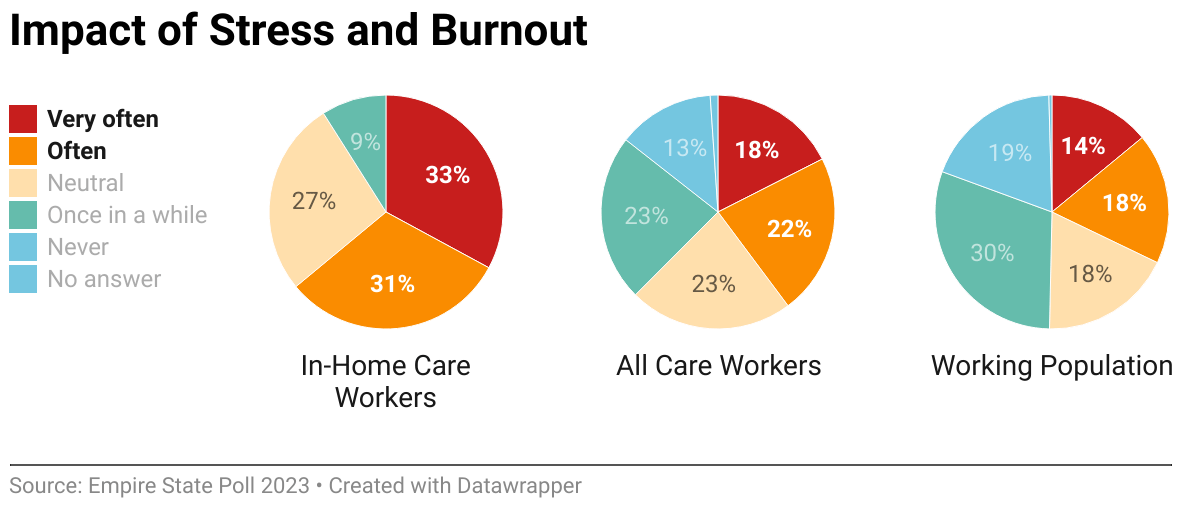
Key Findings
- Care worker respondents were more likely to report low pay, disrespect, understaffing, harassment, discrimination or feeling unsafe at work as sources of stress and/or burnout.
- Stress and burnout had greater impacts on care workers than on the general working population of respondents, making it difficult for them to take care of themselves and/or spend time with loved ones.
- In addition to providing paid care work, care workers were also more likely to bear responsibility for unpaid caregiving in their personal lives.
Research Impact
Amid broad recognition of a “care crisis” – marked by labor shortages across different sectors of the care economy alongside rising demand for these services – these findings point to the urgency of ensuring that care economy jobs are dignified, well-paid and safe. The findings also highlight the importance of confronting the root causes and effects of the stress and burnout that care workers experience.
Regenerative Organizing: A Pilot Program Promoting Personal Healing and Collective Resilience for Care Workers
Zoë West, Worker Institute senior researcher, worker rights and equity; Ariana Shapiro, M.S. ILR ’25
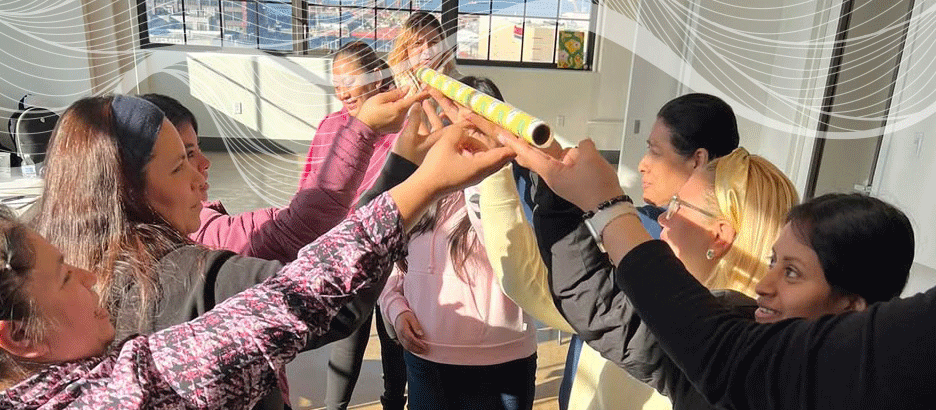
Overview
Care workers deal with significant stress and trauma in their jobs, yet often face barriers to accessing care themselves. As unions, worker centers, advocates and policymakers push for structural solutions to improve care workers’ pay and working conditions, there is also greater visibility into the impacts of stress and trauma that care workers face due to the nature of their work and their position as a devalued workforce made up disproportionately of women, people of color and immigrants.
This report provides an overview of a pilot Regenerative Organizing program that addressed stress and trauma for care workers in the New York metropolitan area. The Worker Institute at Cornell University’s ILR School convened nurses, domestic workers and home care workers for a months-long training and coaching process in “regenerative practices” – frameworks and tools that support personal and collective wellbeing and foster more resilient collective organizing.
Key Findings
- The program sharpened participants’ understanding of the effects of stress, trauma and oppression at both the individual level and the organizational/collective level.
- Participants began to see personal healing as an important foundation to becoming more effective in leadership, organizing and supporting others.
- Participants applied the program’s learnings within their organizational structures and practices, shaping their work with members, staff and community members.
Recommendations
- Unions and worker organizations should take seriously the impact of stress and trauma on their members, staff, and organizational dynamics, and integrate programming into existing organizational strategies and priorities.
- Attending to workers’ stress and trauma can enhance their capacity to take leadership in advocating for their needs and engaging in collective action.
- Care workers must be provided more opportunities to join learning communities with other care workers and organizers across different unions, organizations and sectors.
Research Impact
Since the COVID-19 pandemic, many workers and organizations have recognized the acute need to address the impacts of stress and trauma. However, limited guidance is available on interventions that connect individual healing to building power through worker organizations. This report documents a new model for worker organizations seeking to address these issues while building the leadership and strength of their members and staff. While this pilot program was tailored for care workers, the Regenerative Organizing program could be adapted for workers, unions and organizations across various sectors.
Related Information
Domestic Workers Rising: An Evaluation of the We Rise Peer Training Program
Zoë West, Worker Institute senior researcher, worker rights and equity; Ketchel Carey, BSILR ’23; Anne Marie Brady, Worker Institute research director, worker rights and equity
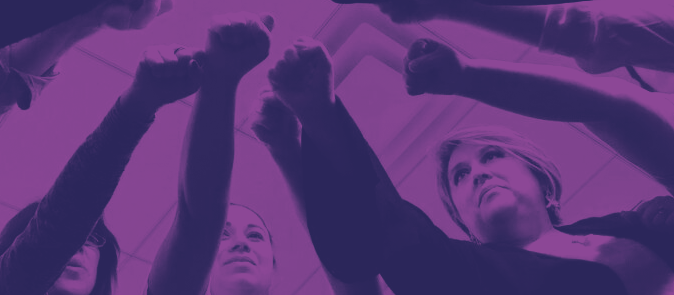
Overview
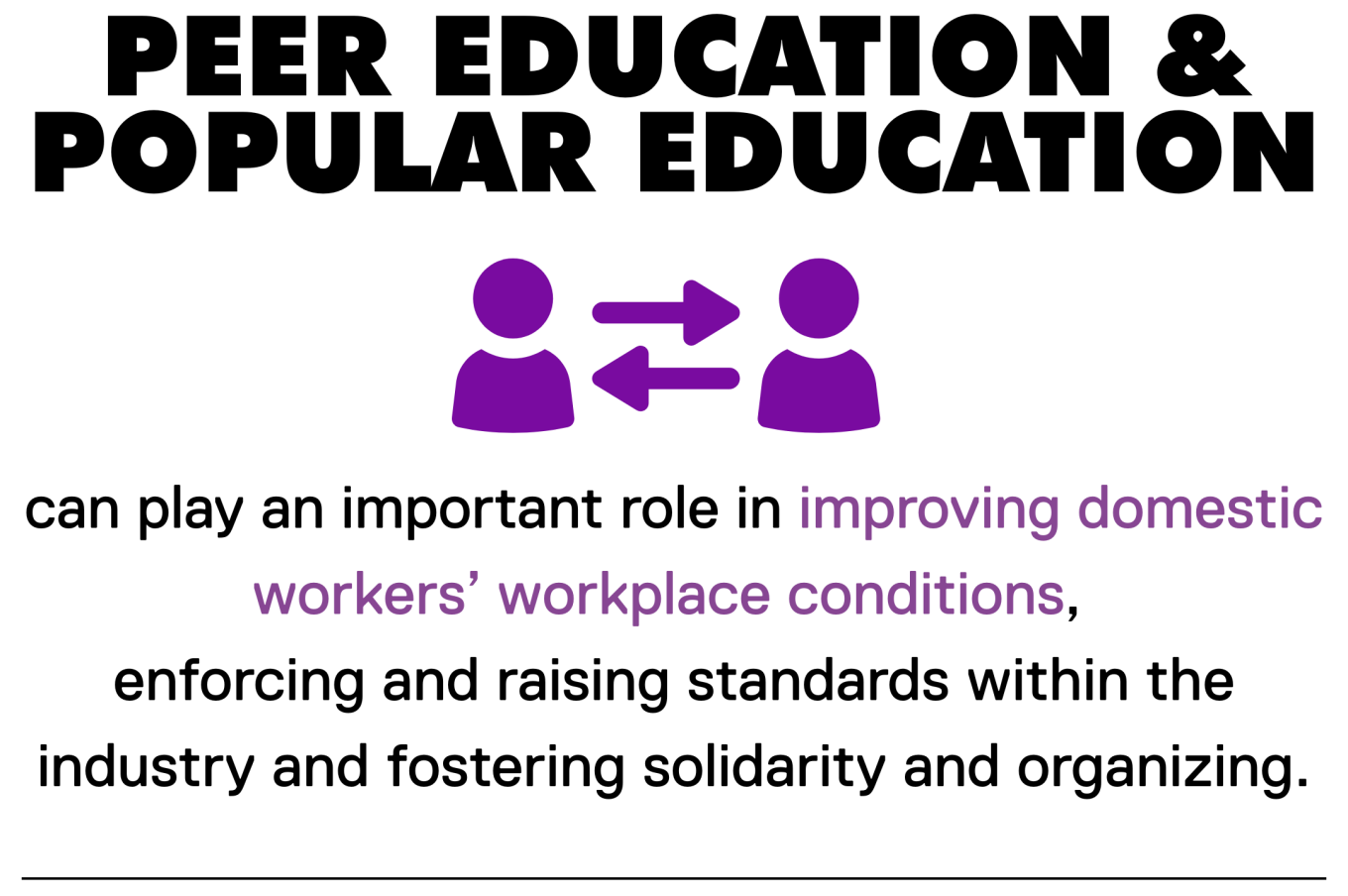
Domestic workers perform the critical labor of caring for children and cleaning homes, yet the value of their work has long been diminished by low pay and challenging workplace conditions. They have been excluded from core labor protections and collective bargaining rights because of who is performing this labor—disproportionately women of color and immigrants—and because of where this labor is carried out—in the home.
This report is based on an in-depth evaluation of the impact of the We Rise Nanny Training, a peer education program in New York, incubated by the Worker Institute. The program aims to lift standards in the domestic work industry by integrating workers’ rights education with professional development, using popular education pedagogy. The evaluation was designed as an 18-month, mixed-method, longitudinal study that was shaped by the principles of community-based participatory research.
Key Findings
- The training empowered participants to increase their wages, improve working conditions and secure both written contracts and overtime pay. This helped formalize their terms of employment and increased employers’ compliance with employment law.
- Participants became more involved in activities central to lifting industry standards and expanding the domestic workers’ rights movement—sharing information with other nannies, conducting outreach and recruitment, and engaging in organizing and advocacy activities.
Recommendations
- Recognize popular education and peer training as a critical part of enforcing and lifting standards for domestic workers and other precarious workers.
- Expand access to training programs that firmly ground professional/workforce development within a framework for building workers’ power.
- Integrate training programs into broader strategies to institutionalize precarious workers’ collective power.
- Support the sustainable expansion of the We Rise Nanny Training for domestic worker organizations.
Research Impact
In the face of widespread workplace violations across low-wage industries, worker training and education have been one important tool to inform workers of their rights and to strengthen their ability to advocate for themselves. This research evaluates the impact of one such training program—the We Rise Nanny Training in New York, a collaboration between a growing coalition of worker organizations and the Worker Institute at Cornell University’s ILR School. Research into the program’s impact highlights the critical role of popular education and peer training in lifting and enforcing labor standards for domestic workers. The findings also reveal a peer training model that can be replicated for domestic workers nationally and other precarious workers.
Related Information
Shifting Disability Systems to Align with Employment First in New York State
Kaitlyn Jackson, Ph.D., Yang-Tan Institute policy associate; Ellice Switzer, Yang-Tan Institute senior extension associate; LaWanda Cook, Ph.D., Yang-Tan Institute senior extension associate

Overview
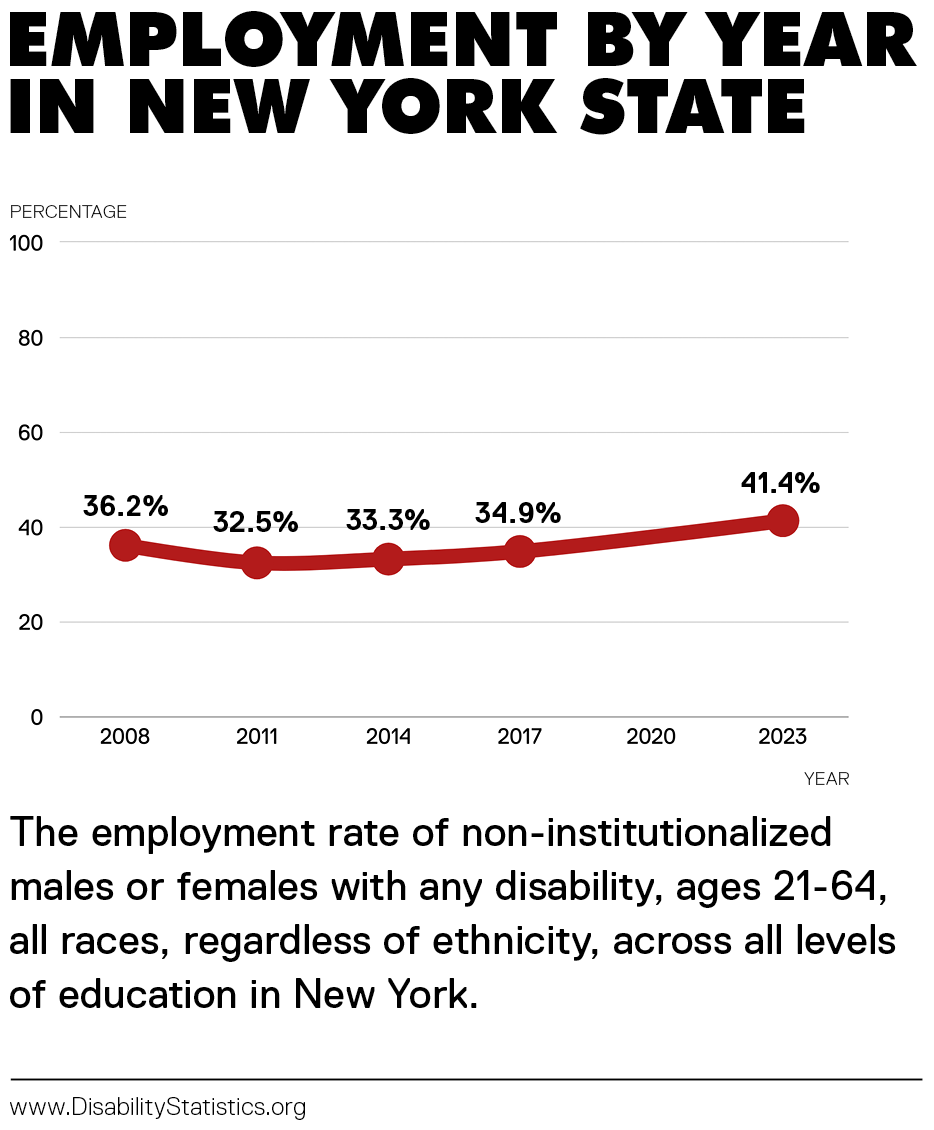
Employment First (E1st) is a national systems-change framework centered on the premise that all individuals, including those with the most significant disabilities, are capable of full participation in Competitive Integrated Employment (CIE) and community life. This brief shares insights into that philosophy and the current state of Employment First in New York.
This brief summarizes findings about barriers that may hinder New York’s full adoption of E1st strategies for people with intellectual and developmental disabilities or with other significant disabilities. The authors derived these findings from two distinct research and program evaluation efforts conducted by faculty at Cornell’s Yang-Tan Institute on Employment and Disability (YTI). The brief suggests practice and policy solutions to help the state meet the goals of Governor Kathy Hochul’s New York State Executive Order (EO) 40, Committing New York to Be an Employment First State to Increase Competitive Integrated Employment for New Yorkers with Disabilities.
Key Findings
- Research and evaluation efforts have identified common barriers within the disability service and employment systems, as well as in society and the built environment.
- The brief notes common barriers to CIE for people with significant disabilities in the areas of service system design, transportation, and attitudes of families and support staff.
- Targeted actions, such as policy and rate adjustments by state agencies, could remove several barriers to expanding CIE opportunities for people with significant disabilities.
Recommendations
- Consider a statewide transportation task force.
- Evaluate Medicaid-billable (HCBS) services and care coordination to ensure that outcomes align with E1st priorities.
- Establish mechanisms for requiring benefits counseling when establishing eligibility for services from the Office for People with Developmental Disabilities.
- Require training for direct support professionals on employment for people with significant disabilities, and require ongoing business engagement training for employment professionals.
- Establish research-based standards for non-work programming that support work exploration.
- Improve coordination between the New York State Education Department and state agencies serving youth with disabilities.
Research Impact
People with significant disabilities want to work in the community at a competitive wage; however, their support systems and communities may unwittingly prevent them from reaching that goal. Researchers at YTI have synthesized the results of two separate inquiries into New York’s disability employment services system into recommendations for New York policymakers and systems leaders to help remove those barriers. The recommendations focus on improving transportation, changing provider attitudes and competencies, and adjusting reimbursement structures among state agencies.

About New York State ILR School
Established by the New York State Legislature in 1945, the New York State School of Industrial and Labor Relations at Cornell University is the world’s leading college of the applied social sciences focusing on labor, management and the economy. It is guided by a commitment to social and economic justice and to improving the lives of New York’s working people.
With offices in New York City, Buffalo and Ithaca, Cornell ILR Outreach provides research, reports, education and training for New York’s workers, unions, employers and government. It serves as a valuable resource for New York’s policymakers to advance equitable workplaces and well-informed public policy.
Key ILR Institutes and Programs Impacting New York State:
CONTACT:
Cathy Creighton
Director
cathycreighton@cornell.edu
The Buffalo Co-Lab for Economic Development continues to play a leading role in Buffalo’s resurgence with a more equitable economy. By partnering with Western New York businesses, unions, government, education and community organizations, the Buffalo Co-Lab impacts New Yorkers statewide through workplace health and safety programs, economic development and labor research, immersion experiences for students and many other initiatives.
CONTACT:
Ariel Avgar
Director
aca27@cornell.edu
The Center for Applied Research on Work exists to connect research on work with the practice of putting it to use. We support member institutes and affiliated faculty and students in their efforts to take insights about work, labor and employment and share them broadly. We are uniquely placed to seed innovative research that puts academic study into practice.
CONTACT:
Lara Skinner
Director
lrs95@cornell.edu
The The Climate Jobs Institute is guiding New York and the nation’s transition to a strong, equitable and resilient clean energy economy that tackles the climate crisis, creates high-quality jobs, confronts race and gender inequality, and builds a diverse and inclusive workforce.
CONTACT:
Matt Saleh
Senior Associate Director
mcs378@cornell.edu
The Criminal Justice and Employment Initiative improves employment opportunities for people with criminal records by designing and delivering legal employment training to close information gaps, implement best practices, and integrate job seekers with criminal records into the workforce.
CONTACT:
M. Diane Burton
Director
burton@cornell.edu
The Institute for Compensation Studies is an interdisciplinary center that researches, teaches and communicates about monetary and non-monetary rewards from work, and how these rewards influence outcomes for individuals, companies, industries and economies.
CONTACT:
Ian Greer
Director
icg2@cornell.edu
The Ithaca Co-Lab mobilizes students and research to tackle policy challenges in the local region. These include fighting unemployment, winning a living wage, overcoming disadvantage in the job market and organizing for worker voice in the workplace.
CONTACT:
Esta Bigler
Director
erb4@cornell.edu
The Labor and Employment Law Program examines the laws and policies that impact the workplace and offers educational programs. We provide labor and employment law education for job seekers, employees, employers, government agencies, community organizations and unions in support of the Cannabis Workforce Initiative.
CONTACT:
Harry Katz
Director
harry.katz@cornell.edu
The Scheinman Institute combines the academic depth of faculty in conflict/dispute resolution, employee relations and labor relations with the practical knowledge of leading practitioners in the field to provide intensive skill development for individuals and best practices for organizations.
The institute trains more students in mediation and arbitration than any other school in the United States.
CONTACTS:
Patricia Campos-Medina
Executive Director
The Worker Institute
pec1@cornell.edu
Risa Lieberwitz
Academic Director
The Worker Institute
rll5@cornell.edu
The Worker Institute engages in research and education on contemporary labor issues to generate innovative thinking and solutions to problems related to work, economy and society. The institute brings together researchers, educators and students with practitioners in labor, business and policymaking to confront growing economic and social inequalities, in the interests of working people and their families. A core value of the Worker Institute is that collective representation and workers’ rights are vital to a fair economy, robust democracy and just society.
CONTACTS:
Susanne Bruyère
Academic Director
smb23@cornell.edu
Wendy Strobel Gower
Thomas P. Golden Executive Director
ws283@cornell.edu
The Yang-Tan Institute on Employment and Disability works to advance the inclusion and full participation of people with disabilities in the workplace and community. Our research, training and technical resources expand knowledge about disability inclusion, leading to positive change.